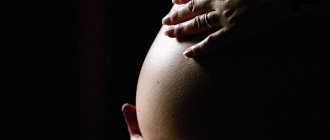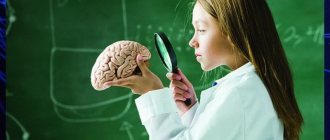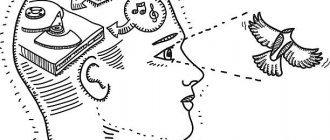Activity theory in psychology dates back to the 1930s. For the first time, the basic principle of activity theory was formulated by S.L. Rubinstein. Thus, the foundation was laid for an active approach to considering the development of a person’s personality.
Rubinstein derived the rationale for the approach based on the works of K. Marx. Subsequently, the theory of activity was developed in the presentation of Vygotsky and Leontiev. It is with the name of Leontiev that this doctrine is associated, and traditionally is called the general psychological theory of activity.
In this article:
Basic principlePrinciples of activity theoryWork, incentive, goal, taskActivity determines development
The basic principle
Photo by Laura Tancredi: Pexels
The principle of the unity of consciousness and activity, as presented by Rubinstein, has the following formulation: “The subject in his actions is not only revealed and manifested; it is created and determined in them. Those that he does can define what he is; the direction of his activity can determine and shape him.”
In other words, the psyche and consciousness of an individual is formed in activity, and is manifested in activity. Thus, the identity of human activity and consciousness was established. Consciousness, according to Rubinstein’s presentation, is not given for introspection.
It manifests itself through the interaction of the subject, in this case through activity, and is cognized in it. Activity is considered as a set of actions that are aimed at achieving a goal.
Activity is a condition for the formation of meanings
The approach to activity is presented as a paradigm in Russian psychology and as a model for formulating questions and solving them.
In the works of S.L. Rubinstein (1946, 1957, 1997), A.N. Leontyev (1972, 2007), B.F. Lomova (1981, 1984), K.A. Abulkhanov-Slavskaya (1973, 1991) laid the methodological foundations of the activity approach. Significant contributions to the development of this approach were made by G.M. Zarakovsky (1966), D.A. Oshanin (1977), B.G. Ananyev (1962), P.V. Sarkin (1962). K. Anokhina (1975), V.A. Lektorsky (2011), N.A. Bernstein (1947), A.L. Zhuravleva (2005), A.V. Karpova (2004), B.A. Bodrova (2006) and V.M. Rusalova (2018). There are different approaches to activity research.
Principles of Activity Theory
The theory of activity itself is a system for the study of mental phenomena, the main subject of study of which is activity, as preceding and determining all mental processes.
Leontiev's theory of activity
The main principles of the theory, as presented by Leontiev, are:
- principle of objectivity - the principle is based on the understanding of an object not only as something specifically existing, but also as an image or product of a mental reflection of the property of an object, which takes place as a result of activity directed at it. This dual understanding allowed us to eliminate the question of the stimuli that affect the individual, as well as his responses to these possible stimuli;
- the principle of activity - allows us to consider a person not only as a subject adapting to environmental conditions, but, above all, from the position of the transformative and creative activity of the individual;
- the principle of the non-adaptive nature of human objective activity - develops a formula for human activity, as presented by Leontyev it sounds as follows: “... the internal (subject) acts through the external and thereby changes itself...”. This principle reflects the meaning of a specific characteristic of human activity;
Giphy
- the principle of mental analysis of activity “by units” is a strategy for studying the structure of the activity itself. The study of psychic reality requires its consideration from different sides, which cannot be done by choosing one universal unit.
L.S. Vygotsky worked in detail on the issue of units of psychological analysis. From his point of view, a unit should be understood as a product that must have all the properties inherent in the whole, but at the same time it must be a living part of the unity;
- the principle of mediation is the relationship of one object to another, which can be comprehended or known only through the third, which serves as the basis for knowledge of the first two. This complex principle includes the following provisions: 1) the mediation of mental reflection by a process connecting the subject with the process of objective activity; 2) mediation of interpersonal relationships through joint substantive activities;
- the principle of dependence of mental reflection on the place of the reflected object in the structure of activity - establishes the variable nature of the dependence of memorization on the conditions of action with which the object whose memorization is necessary is associated. This principle was discovered based on research into human memory and has not been fully disclosed.
Principles for constructing psychological research
Objectivity in the study of mental phenomena . This principle means that when studying mental phenomena one should always strive to establish the material causes of their occurrence. Because of this, this principle requires that any mental phenomena be considered in unity with those external causes and internal conditions in which they arise and manifest themselves. Constructing psychological research in accordance with the principle of objectivity means the practical implementation of one of the basic principles of psychology - the principle of determinism - the causality of mental phenomena.
The principle of objectivity also requires the study of a person in the process of his activity, since the mental characteristics of a person can only be judged by his real actions. Based on this principle, it is necessary to study mental phenomena both in the most typical and atypical conditions for a given person. Only in this case can you comprehensively characterize a person and not miss anything significant. All obtained facts, including those that contradict each other, must be subjected to a comprehensive analysis. Conflicting facts should attract especially close attention; in no case can they simply be discarded, but they must either find an explanation for them or conduct additional study.
Analytical-synthetic study of personality . In the mental appearance of each person there is something common, characteristic of all people of a given era. At the same time, people living in states with different social systems have specific features that reflect the social relations that exist in a given society. Thus, we are specifically talking about the special appearance of the Soviet person, which developed under the conditions of developed socialism. At the same time, each person is a unique individual.
The existence of the general, special and individual in the personality of each person makes it necessary to be guided by the analytical-synthetic principle when constructing research.
The study of mental phenomena in their development is an important principle for constructing psychological research.
The objective world is in constant motion and change, and therefore its reflection cannot be frozen, motionless. The constant change in the psyche as a reflection of the changing reality requires the study of mental phenomena in their development.
If mental phenomena are continuously changing and developing, then this must necessarily be taken into account when constructing any research aimed at their comprehensive study.
Work, incentive, goal, task
Labor as a type of activity is the main feature of a person, and activity acts, in this vein, as a dynamic system of his interaction with the world.
This interaction allows the subject to realize the relationship with the surrounding reality, against the background of which a mental image appears, embodied in the object. Activity basically has motivating reasons that direct the subject to achieve the goal.
The stimulus that causes the activity of a subject and determines the direction of his activity, under the influence of external and internal factors, is a motive. The motive determines the goals and objectives of any activity.
The goal creates an image of the result towards which human activity is directed. A task includes the goal of an activity, which is set under certain conditions. It is resolved by the subject by using and changing specified conditions according to a certain algorithm. The task acts as a given environment for the development of the individual’s activity itself.
Photo by Christina Morillo from Pexels
Your psychologist. The work of a psychologist at school.
| Methods of psychology |
| History of the development of psychology |
| The nature and essence of the human psyche and consciousness |
| Psychological theory of activity |
| All pages |
Page 6 of 6
1.6 Psychological theory of activity
Theoretical information The concept of activity in psychology. Activity is an active interaction with the surrounding reality, during which a living being acts as a subject purposefully influencing an object and thus satisfying its needs [Big Psychological Dictionary / Edited by B. Meshcheryakov, V. Zinchenko, 2008]. Activity can be defined as a specific type of human activity aimed at knowledge and creative transformation of the surrounding world, including oneself and the conditions of one’s existence [Nemov R.S., 2004]. Activity is the internal and external activity of a person, regulated by a conscious goal [from the lecture by L.A. Golovey, 1995]. From the three definitions presented, it is obvious that activity is carried out by a conscious subject in the process of its interaction with the environment and presupposes objectivity and purposefulness. The subject of an activity is what it directly deals with. For example, the subject of cognitive activity is a variety of information, the subject of educational activity is knowledge, abilities and skills, the subject of labor activity is a created material product, the subject of creative activity is a created fundamentally new material or cultural product. In psychology, the concept of activity is differentiated from the concept of activity. Not only humans, but also plants and animals are active, but their activity is limited. In animals, it comes down to elementary forms of exploration of the environment and learning, in contrast to the various human activities, which include activity as one of the forms. Thus, activity acts as a specific type of human activity. R.S. Nemov [Nemov R.S., 2004] summarizes the main differences between human activity and animal activity. 1. Human activity is productive, creative, creative in nature. Animal activity has a consumer basis; as a result, it does not produce or create anything new, compared to what is given by nature. 2. Human activity is connected with objects of material and spiritual culture, which are used by him either as tools, or as objects to satisfy needs, or as means of his own development. For animals, human tools and means of satisfying needs do not exist as such. 3. Human activity transforms himself, his abilities, needs, and living conditions. The activity of animals changes practically nothing either in themselves or in the external conditions of their life. 4. Human activity in its various forms and means of implementation is a product of history. The activity of animals appears as a result of their biological evolution. 5. People’s objective activities are not given to them from birth. It is “given” in the cultural purpose and way of using surrounding objects. Such activities need to be formed and developed in training and education. The same applies to internal, neurophysiological and psychological structures that control the external side of practical activity. The activity of animals is initially given, genotypically determined and unfolds as the natural anatomical and physiological maturation of the organism occurs. That is, through activity, a person consciously changes his environment (natural, cultural) and himself. It is also necessary to differentiate the concepts of “activity” and “behavior”. Behavior, unlike activity, does not necessarily involve the creation of a certain product; it can be spontaneous, not fully conscious, and not have a specific goal, that is, it can be chaotic. Behavior is determined by the conditions of the situation and the person’s personality, his character and is analyzed, as a rule, in this context. Thus, human activity is a very complex and diverse phenomenon. Its implementation involves all components of the human hierarchical structure: physiological, mental and social.
| Activity structure. |
Activities have a complex hierarchical structure, in which 4 levels are traditionally distinguished: the level of special activities (types of activity), the level of actions, the level of operations and the level of psychophysiological functions. The level of activity includes such structural elements as motive (it involves the emotional experience of a need, the personal meaning of the activity) and goal (a conscious image of the anticipated result towards which the activity is aimed). The activity is carried out by a subject, a person, who has an individual, systemically organized motivational sphere, in which leading motives are presented that determine the general motivational orientation of the person and his preference for certain types of activities. (In the section devoted to the motivational-volitional sphere of personality, this issue is covered in more detail). The choice of activity and goal setting has an individual personal meaning in the context of a person’s overall life activity. An action is a relatively complete element of activity aimed at performing one simple current task, that is, it is the main structural unit of activity. As S.L. writes Rubinstein, “a task in which the goal is correlated with the conditions that determine its implementation determines the psychological structure of the action” [Rubinstein S.L., 2000]. Internal, mental, activity has the same structure as external, therefore, both external and internal actions are distinguished (actions of perception, mnemonic, mental actions, actions of imagination). External and internal actions are interconnected through internalization and exteriorization (concepts introduced by L.S. Vygotsky). Interiorization (from external to internal) is the process of forming stable structural and functional units of consciousness through the assimilation of external actions with objects and mastery of external symbolic means (for example, the formation of internal speech from external speech). Exteriorization (from internal to external) is the externalization of the results of mental actions carried out on the internal plane, their embodiment in a material product, the implementation of a plan. Thus, at the second level, activity appears as a set of interrelated actions. The way an action is performed is called an operation. Yu.B. Gippenreiter gives the following examples of various operations that allow one to achieve the same goal: “They say that the women’s way of threading a needle is that the thread is pushed into the eye of the needle, and men supposedly push the eye onto the thread. These are...different operations, in this case motor ones. Another example: you want to find a certain place in a book, but you discover that the bookmark you previously placed has fallen out. You are forced to resort to another method of finding the required paragraph: either try to remember the page number, or, turning through the book, skim each page, etc...." [Gippenreiter Yu.B., 2008, P. 107.]. Operations characterize the technical side of performing an action and depend on the conditions for its completion. If an action corresponds to a task (intermediate goal), the solution of which brings one closer to the final goal of the activity (what a person wants to have in the end), then the operation meets the conditions under which this task is set and solved. Operations are little realized or not realized at all; in real life they practically fall out of the sphere of conscious control and proceed automatically. At the fourth level of the structure of activity there are psychophysiological functions that ensure the execution of operations. To carry out operations, you need an organism that has a musculoskeletal system and is controlled by a highly organized nervous system, which allows you to build complex movements and coordinate them into actions. The problem of mechanisms of movement organization was deeply studied by the outstanding Russian physiologist N.A. Bernstein, who proved that the construction of movements is based on the principle of sensory corrections and the action of the reflex ring. In Fig. 1 shows the general diagram of its operation. You can read in detail about the operation of the reflex ring, for example, in the work of Yu.B. Gippenreiter, included in the list of recommended literature for mastering.
Movements can be built at five levels, each of which involves different morphological layers of the central nervous system: the spinal and medulla oblongata, subcortical centers, and cerebral cortex. Level A - the level of muscle tone - is the lowest and most ancient. This includes involuntary trembling and chattering of teeth. B - level of synergy - manages the “internal space of the body”, providing movements without the participation of higher levels, for example, involuntary facial expressions, stretching. C is the level of the spatial field. It is used to build movements adapted to the spatial properties of objects - their shape, position, length, weight, for example, walking, climbing, jumping, throwing, hand movement on a piano or computer keyboard. D - level of objective actions - this is the cortical level, it includes all instrumental actions, manipulations with objects, for example, driving a car, manipulating a cell phone, operating a coffee machine, etc. E - level of intellectual motor acts - speech movements, writing movements. They are determined not by objective, but by abstract, verbal meaning. In the organization of complex movements, several levels are involved at once - the one on which the movement is built, and all the underlying ones. Thus, the structure of activity combines a number of elements from the level of types of activities with their motives and goals to the level of the physiological structure of movements. This is summarized in Fig. 2, taken from the textbook on general psychology by A.G. Maklakova.
Activities.
During its existence, humanity has created a variety of activities. S.L. Rubinstein considered work, learning and play to be the basic activities. The most studied and described in psychology are cognitive activities, learning, work, play, communication. Cognition is an activity aimed at obtaining and updating knowledge, developing concepts, schemes, concepts that provide understanding of the world around us and orientation in it. The general goal of cognition is to comprehend the truth through identifying some essential features in objects or phenomena of the surrounding reality, on the basis of which a model of these objects or phenomena is built. Teaching is a special form of personal activity aimed at assimilation (appropriation) of social experience of cognition and transformation of the world, which includes mastery of cultural methods of external objective and mental actions. Educational activity involves the assimilation of theoretical knowledge, the formation of skills and abilities; it can be implemented both independently by the subject and in educational institutions. In adults, learning can take on the character of self-education. The structure of educational activity is formed in children of primary school age (preschoolers have only its prerequisites, one of which is cognitive interest), for whom learning is the leading activity and determines the emergence and development of their psychological new formations of this age. Labor is human activity to transform nature and society in order to satisfy personal and social needs. Labor activity is aimed at a practically useful result - various benefits: material (food, clothing, housing, services), spiritual (scientific ideas and inventions, achievements of art, etc.), as well as the reproduction of the person himself in the totality of social relations. Each type of work has its own, more or less complex, technique that must be mastered. Therefore, knowledge and skills always play a more or less significant role in work. A game is a type of activity whose goal is the activity itself, and not its result. The main thing in the game is participation, that is, the process itself is important. Play is, if not a type of learning, then a branch of it, because it, like learning, is preparation for work. All games, to one degree or another, teach some type of mental or physical activity, bring some skills, knowledge, abilities, develop logic, erudition, reaction, physical condition of the body, and so on. There are several types of games: individual and group, subject and plot, role-playing and games with rules. Often in life there are mixed types of games: subject-role-playing, plot-role-playing, plot-based games with rules, etc. The relationships that develop between people in the game, as a rule, are artificial in the sense that they are not taken seriously by those around them and are not the basis for drawing conclusions about a person. Gaming behavior and gaming relationships have little effect on real relationships between people, at least among adults. For children, games have primarily a developmental value, and for adults they serve as a means of communication and relaxation. Communication is an activity aimed at the exchange of information between communicating people and their interaction. It aims to establish mutual understanding, good personal and business relationships, and achieve the goals of joint activities. At different age stages of mental development, one or another activity acts as a leading one, that is, mastery of this activity and its implementation provides the main mental developments of age. R.S. Nemov [Nemov R.S., 2004] identifies a number of aspects (lines) of progressive transformation (development) of activity: 1. Phylogenetic and cultural-historical development of the system of human activity. 2. Ontogenetic development and development of activities in the process of individual human development. 3. Changes occurring within individual activities as they develop. 4. Differentiation of activities, in the process of which others are born from some activities due to the isolation and transformation of individual actions into independent types of activity. In the process of development of activity, its internal transformations occur. It is enriched with new subject content; its object and, accordingly, the means of satisfying the needs associated with it become new objects of material and spiritual culture. New means of implementation appear for activities, they speed up its progress and improve results. For example, learning a new language expands the ability to record and reproduce information. In the process of development of activity, automation of individual operations and its other components occurs, they are transformed into skills and abilities, as a result, new types of activity can be separated from it, isolated and further independently developed.
Questions for self-control
1. What is an activity? 2. What is the subject of the activity? 3. How do the concepts of “activity” and “activity” relate? 4. What are the differences between animal activity and human activity? 5. What is the structure of the activity? 6. What levels of movement construction were identified by N.A. Bernstein? 7. What types of activities are defined and studied in psychology? 8. What are the lines of activity development?
Source: Psychology: textbook / Answer. ed. E.V. Kazakova, M.V. Korekhova, E.V. Leus; North (Arctic) federal University named after M.V. Lomonosov. - Arkhangelsk: Publishing House "RAO", 2022. - 219 p.
<< Previous — Next
"Objectified" need
This concept can be traced using the example of a newly born gosling, which has not yet encountered any specific object, but its properties are already recorded in the mind of the chick - they were passed on to it from its mother in the most general form at the genetic level, so it does not have a desire follow any thing that appears before his eyes at the moment of hatching from the egg. This happens only during the meeting of the gosling, which has its own need, with an object, because it does not yet have a formed idea of the appearance of its desire in the material world. This thing in the chick's subconscious mind fits the scheme of a genetically fixed approximate image, so it is able to satisfy the need of the gosling. This is how a given object that fits the required characteristics is captured as an object that satisfies the corresponding needs, and the need takes on an “objective” form. This is how a suitable thing becomes a motive for a certain activity of the subject: in this case, in the subsequent time, the chick will follow its “objectified” need everywhere.
Thus, Aleksey Nikolaevich and Sergey Leonidovich mean that the need at the very first stage of its formation is not such, it is, at the beginning of its development, the body’s need for something, which is outside the subject’s body, despite the fact that it is reflected on his mental level.







